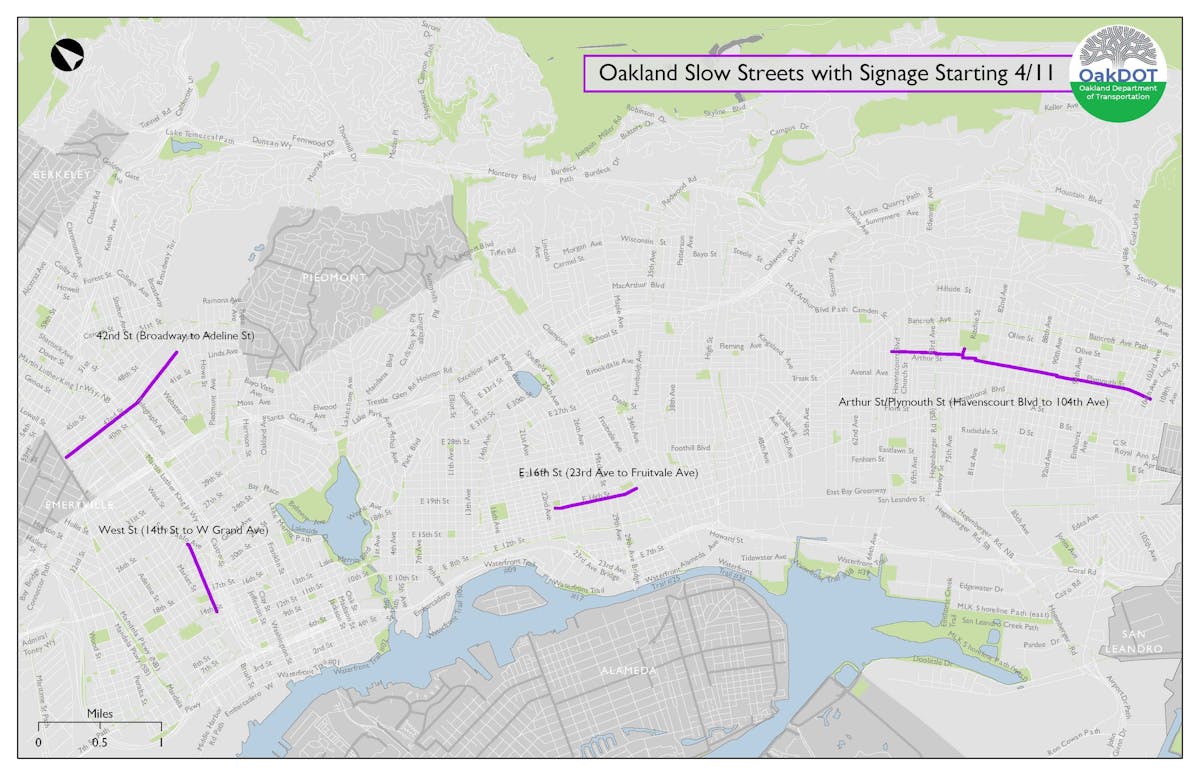COVID-19-inspired open streets take root in American cities
Around the country, as the COVID-19 shut down enters its second month, cities have demonstrated a variety of responses with regards to access to open space as shelter-in-place initiatives have taken hold. Some cities, like Los Angeles, have opted to shut down parks and hiking trails for fear of facilitating large groups of people gathering in a single place. Others, like Denver, Minneapolis, and Oakland, have embraced the crisis as an opportunity to make more of the city available to pedestrians. With chronically under-sized sidewalks existing as a norm in many cities, some municipalities are moving to close existing vehicle lanes and entire streets to most vehicle use. Shot of one of the streets in Oakland that is being temporarily closed to cars. Image courtesy of Oakland Department of Transportation. In Denver, for example, more than 16 miles of city streets have been optimized for pedestrian use, Denverite reports. In Minneapolis, the figure runs upward of 18 miles of formerly ...


Around the country, as the COVID-19 shut down enters its second month, cities have demonstrated a variety of responses with regards to access to open space as shelter-in-place initiatives have taken hold.
Some cities, like Los Angeles, have opted to shut down parks and hiking trails for fear of facilitating large groups of people gathering in a single place. Others, like Denver, Minneapolis, and Oakland, have embraced the crisis as an opportunity to make more of the city available to pedestrians. With chronically under-sized sidewalks existing as a norm in many cities, some municipalities are moving to close existing vehicle lanes and entire streets to most vehicle use.

In Denver, for example, more than 16 miles of city streets have been optimized for pedestrian use, Denverite reports. In Minneapolis, the figure runs upward of 18 miles of formerly ...
